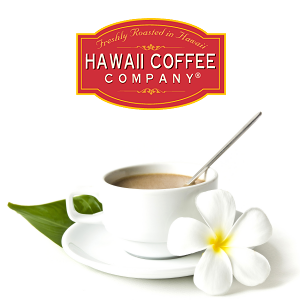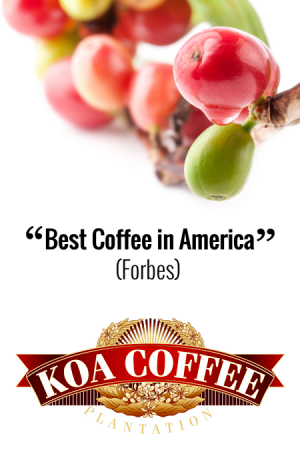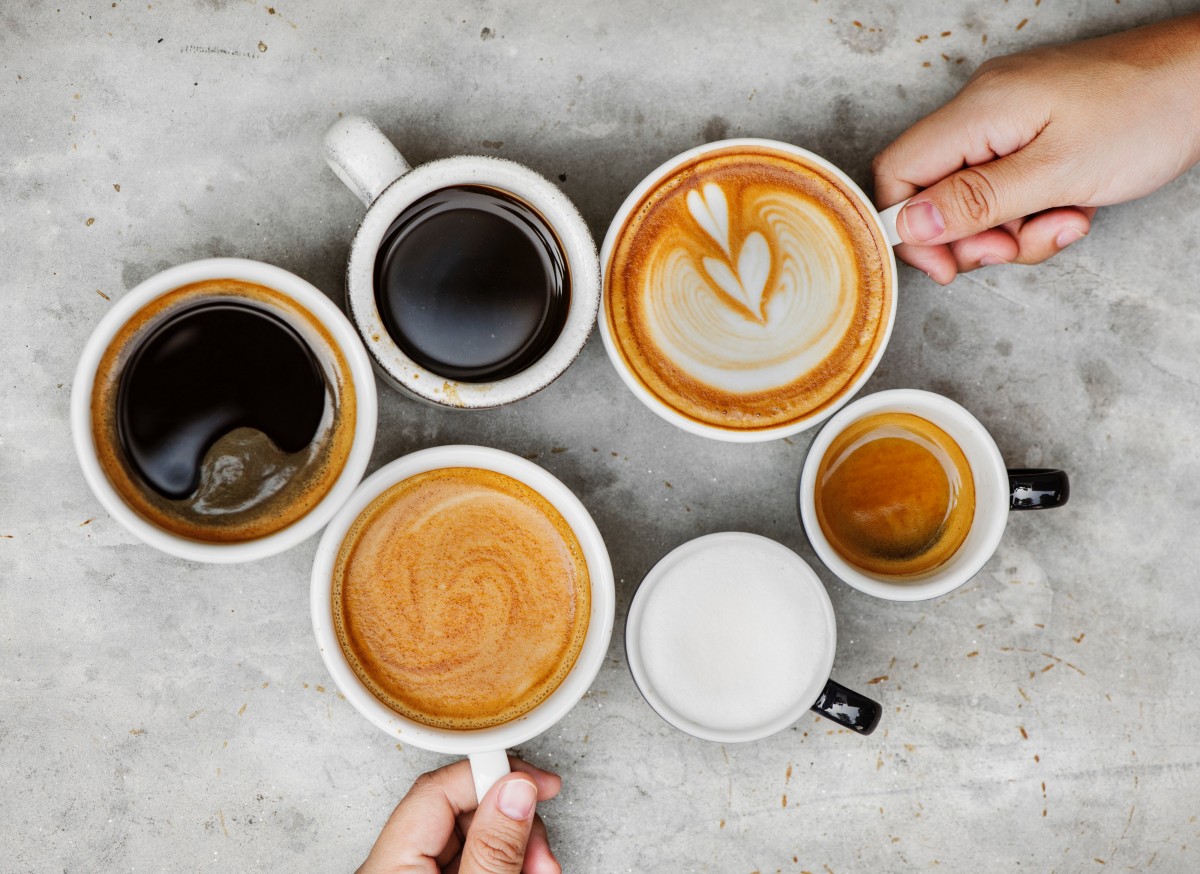The origins of Coffee is a subject that many always question. Nobody really knows exactly how and when this stimulating drink has been discovered. In this article, I will be going over the brief history of coffee.
Coffee’s heritage can be traced back centuries to the ancient forests located on the Ethiopian plateau. According to the legend, there was an Ethiopian goat herder named Kaldi that discovered this “magical bean.

The discovery was made when Kaldi noticed that his herd of goats were acting energetic and refused to sleep. After further inspection, he realized that the goats were consuming the red fruit of the Coffea tree.
Kaldi became very curious about this fruit and decided to share his discovery with the Abbot at the local monastery. When Kaldi presented his discovery to the Abbot, the Abbot disapproved the use of the beans. They threw the beans into the fire, stating that they were the devil’s work.

The beans produced a wonderful aroma that caught the attention of the monks. They were amazed. They immediately removed the beans from the fire. Crushed them to put out the embers, and placed them into a jug of hot water.
The water in the jug turned brown, and this was the early stages of coffee. After consuming this brown water, they learned that this magical beverage produced alertness and energy. This was very beneficial for them, for it would help them stay up during their long hours of prayer. Word began to spread quickly about these magical berries and other monasteries caught on.
The History Of Coffee – The Arabian Land
Though the story of Kaldi might sound a bit silly, although we do know one thing, Coffee originated from Ethiopia. Coffee’s next destination was North, across the Red Sea and into Yemen.
In the 15th century, coffee arrived at Mocha – a port city in Yemen. Mocha became famous for being “the coffee marketplace” along with being responsible for exporting coffee to the rest of the world at the time. The coffee “Mocha” acquired its name from the Port and because the coffee beans that were being exported were called Mocha Sanani. These beans had a very distinct flavour profile with hints of chocolate.
News about this phenomenon began to spread to the Arabian peninsula. Coffee cultivation and trades began by the 15th century, and were being grown in the Yemeni district of Arabia. By the 16th century, coffee was known in Egypt, Persia, Turkey and Syria.

As time gone by, Coffee was gaining quite a reputation. It was not only being enjoyed in homes, but was also introduced to the public through the invention of coffee houses. These houses were called “qahveh khaneh” which started appearing rapidly as coffee’s reputation grew. They became a perfect environment for people to socialize, enjoy entertaining performances, listen to music, play chess and keep up with current news. People started referring to these houses as “Schools of the Wise”, known as a perfect place to exchange knowledge.
As more and more people from all over the world began to visit the holy city of Mecca, the popularity of the “wine of Araby” began to grow.
Nevertheless, in the early 1500s coffee was faced with a ban in Mecca for the effects it had on people and their ideas. Similar bans started to pop up in Egypt and Ethiopia. Eventually, they were all lifted after a few riots broke out.
East and West
The spread of coffee slowly starts to escalate towards the East and the West. Reaching Indonesia and India in the East and Italy in the West, eventually making its way to the rest of Europe.
Yemen was the gatekeeper for coffee. Having an eye on coffee cultivation, authorities would make sure fertile coffee beans would be protected at all times. If a country wanted coffee, they had to negotiate a deal with Yemen.
In 1670, a Sufi saint known by the name of Baba Budan was on a journey to Mecca. Baba Budan was determined to get his hands on some fertile coffee beans and managed to smuggle some back to India, where he started his own coffee cultivation. Eventually, his cultivation turned into a large scale coffee farm in the South of India. Still producing plants till this day!
In 1704, coffee cultivation finally started to stabilize in Java, Indonesia after many failed attempts due to natural disasters. After the stabilization coffee became a staple and the name Java became a household phrase for coffee. Coffee eventually made its way to Celebes and Sumatra which drastically changed Indonesia’s coffee cultivation.
Coffee Makes Its Way To Europe
Stories of this dark, black and mysterious beverage made its way throughout the Near East by European travellers and by the 17th century, it was popularized across the whole continent. Many that learnt about this beverage became very skeptical and began calling it “the bitter invention of Satan”. When it made its way to Venice in 1615, the local clergy decided to condemn the beverage. With so much controversy in the air, Pope Clement VIII intervened and decided to examine the beverage before making any decisions towards it. After tasting the beverage, he found it remarkably satisfying and gave his seal of approval. Throughout all the controversy, coffeehouses began to grow in popularity, as they started becoming the central hubs for social communication and entertainment. The popularity grew throughout all major cities in France, Germany, Austria, Holland and England.
In 1669, France was introduced to coffee by a Turkish ambassador. The Royal Court and Louis the XIV swooned over this delightful drink, and Paris was officially captivated by the beverage.
After the Battle of Vienna in the year 1683, Austria opened its first coffee house named “The Blue Bottle” with the remaining surplus of coffee that was left behind by the invading Turks.
Coffee and England
The first coffeehouses in England were referred to as “penny universities”. This was due to the price of coffee and the flowing conversations which were held. These conversations varied from politics, literature, poetry, science and religion. The dependence of coffee has embedded itself into daily life that it replaced the common breakfast drink which was beer and wine at the time. Drinkers discovered that coffee, instead of alcohol gave them much more clarity and energy, drastically improving their quality of work.
Coffeehouses in London began to grow immensely with over 300 by the mid 17th century. Becoming extremely popular among merchants, brokers, shippers and artists. With many frequenters, many businesses were born in these houses. One of them was Lloyd’s of London, which started at the Edward Lloyd’s Coffee house.

England’s first coffee club opened in Oxford, shortly becoming recognized as the Oxford Coffee Club. This sophisticated club became a hot spot for innovation and ideas and eventually turned into the Royal Society. (1)
Coffeehouses became so popular for English men, that if they weren’t sharing a pint at the local pub, they were most likely conversing at the local coffee house. This would make the wives at the time furious that their husbands were never home. The frustration in women grew so profoundly that in 1674 the Women’s Petition Against Coffee was born to try and ban coffee so that they can have their men back at home.
Coffee Heads to America
During the mid-1600s, coffee made its way to New Amsterdam. Which eventually was renamed to New York by the British. Coffee’s popularity started to grow throughout the nation, but tea continued to dominate the New World until the year 1773. When King George III imposed a heavy tax on tea, this caused a protest by a group of American patriots, some being disguised as Native Americans. This protest was known as the Boston Tea Party. This demonstration resulted in destroying and dumping an entire shipment of tea into the Boston Harbour. This forever changed the coffee culture in America.

With coffee conquering Africa, the Indian Ocean nations and Europe, coffee was on its way to capture every nation that made contact with the Atlantic Ocean.
The Special Tree
In the year 1714, the mayor of Amsterdam decided to present King Louis XIV of France with a delightful gift, which was a young coffee plant. The King being extremely fond of this gift, ordered it to be planted and secured in the Royal Botanical Gardens of Paris.

A few years later in 1723, a young naval officer by the name of Gabriel Mathieu de Clieu was visiting Paris. He has heard about the King’s tree and was keen on getting a clipping for his own production. It is unsure whether the officer somehow managed to steal a clipping from the King’s secured tree or whether the King himself blessed him with one. Regardless, Gabriel Mathieu de Clieu managed to set sail for the island of Martinique with his new acquisition.
During de Clieu’s voyage, he was crossed with many obstacles that had him fighting for his life and his precious plant. From horrible weather, a pirate attack and a saboteur that tried to ruin his plant. He managed to make it back safely to the island of Martinique. Secretly planting his precious tree immediately into the soil upon arrival. After 3 or so years, plantations started to spread and thrive all around the island, eventually making their way to the Caribbean, South and Central America.
In 1730, Sir Nicholas Lawes the English governor of Jamaica brought a handful of coffee plants to his island. Within a short period of time, coffee started blooming in the Blue Mountains, the longest mountain range in Jamaica.
The Coffee Bouquet
In 1727, Francisco de Melo Palheta who was a Brazilian colonel was sent to Guyana to settle a conflict between the Dutch and the French. While in Guyana, he had asked for some coffee seedlings from the French Governor, but was denied. Agitated by the denial, he knew he had to do whatever it takes to get those seedlings. Having charmed the Governor’s wife, she packed him a large bouquet of flowers with some hidden clippings just before his departure.
In 1822, coffee production started to inflate in Brazil. By the year 1852, it has become the largest coffee producer in the world. By 1893, Brazil branched out its coffee cultivation to Kenya, Tanzania and East Africa.
Modern History of Coffee
At the start of the 19th century, coffee was already a global phenomenon, having travelled all over the globe and being shipped and traded by so many nations. Coffee had finally begun to settle, and now it was time to expand through innovations like brewing, roasting and packaging.
Below I’ve listed some important timelines in the history of coffee (2):
- 1818 – The Percolator, the first coffee brewing device is invented by a Parisian metal smith.
- 1864 – The first modern roaster is invented by Jabez Burns of New York.
- 1871 – John Arbuckle invents a machine that can fill, weigh, seal, label coffee in paper packages.
- 1886 – Joel Cheek creates a coffee blend and names it “Maxwell House” after a Ritzy hotel in Nashville, Tennessee that serves it.
- 1900 – Vacuum packaging is invented by the Hills Brothers.
- 1901 – Luigi Bezzera invents the first commercial espresso machine named “The Tipo Gigante”
- 1903 – Ludwig Roselius and his assistant Karl Wimmer discover a way to remove caffeine from coffee beans using steam and chemical solvents. Sanka Coffee is born.
- 1905 – Desiderio Pavoni the first barista discovers the golden standard for espresso brewing, 195 degrees and 9 BARS of pressure.
- 1906 – An inventor by the name of George Washington invents the first massively produced “Instant Coffee”
- 1920 – Prohibition in the United States begins. Coffee sales skyrockets!
- 1938 – Brazil finds a way to make use of all their coffee surplus. Collaborating with a coffee guru by the name of Max Morgenthaler they find a way to freeze-dried coffee. Nescafe is formed.
- 1940 – The United States of American Imports 70% of the world’s coffee supply.
- 1942 – Maxwell House fills the ration kits of the American soldiers that are deployed for War.
- 1946 – Achille Gaggia upgrades the espresso machine with the use of a piston to extract the coffee, resulting in coffee crema.
- 1966 – Alfred Peet launches Peet’s Coffee in Berkely, California. Eventually being credited as the “Grandfather” of Speciality Coffee.
- 1971 – Alfred Peet teaches and discloses all his coffee secrets to three buddies: Jerry Baldwin, Zev Siegl and Gordon Bowker who help Peet out with his first store. Eventually, the three acquired their own roaster and opened their own coffee roaster shop known as Starbucks. Only selling freshly roasted coffee beans. No Drinks.
- 1972 – The first automatic coffee maker is invented and called “Mr. Coffee” by a Cleveland entrepreneur named Vincent.
- 1982 – Starbucks hires a visionary by the name of Howard Schultz, who encourages the brand to branch out into cafes, but they deny for it will take the brand away from their quality roasting reputation.
- 1984 – Starbucks buys Peet’s Coffee business.
- 1987 – Howard Schultz buy Starbucks for 3.8 million dollars and proceeds with his vision of cafes.
Conclusion to the History of Coffee
So there you have it, a brief history of coffee! It’s astonishing to think what this little bean has been through. From being smuggled from country to country to being banned in several nations, it has grown to be the world’s second-most traded commodity in the world. It’s very exciting to see where this bean will end up next, with Coffee anything is possible!
IF YOU’VE ENJOYED THIS ARTICLE, GIVE IT A PIN!



























1 comment